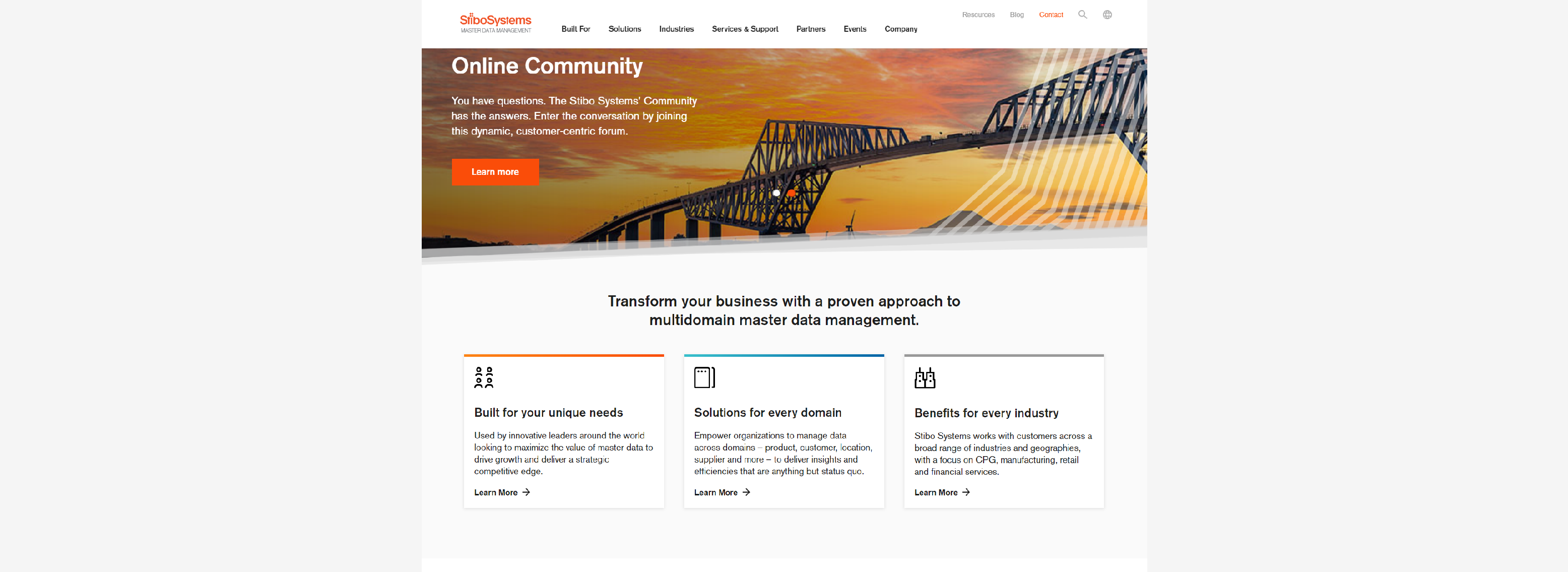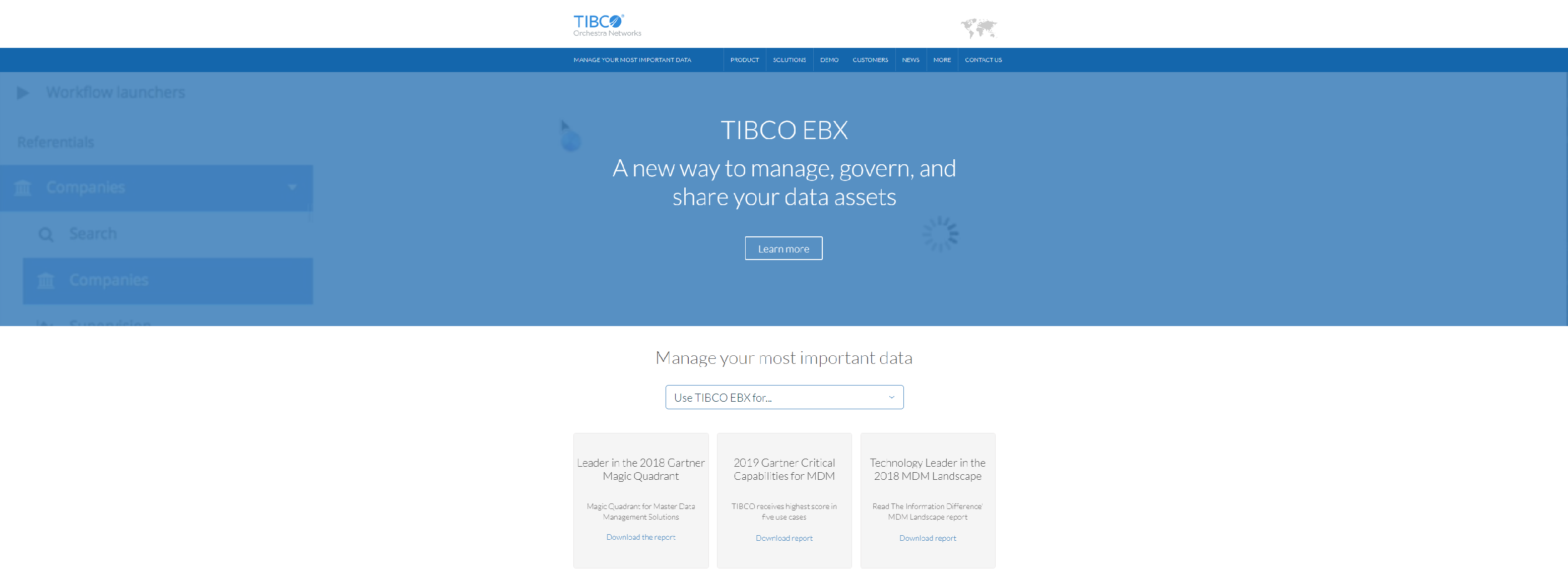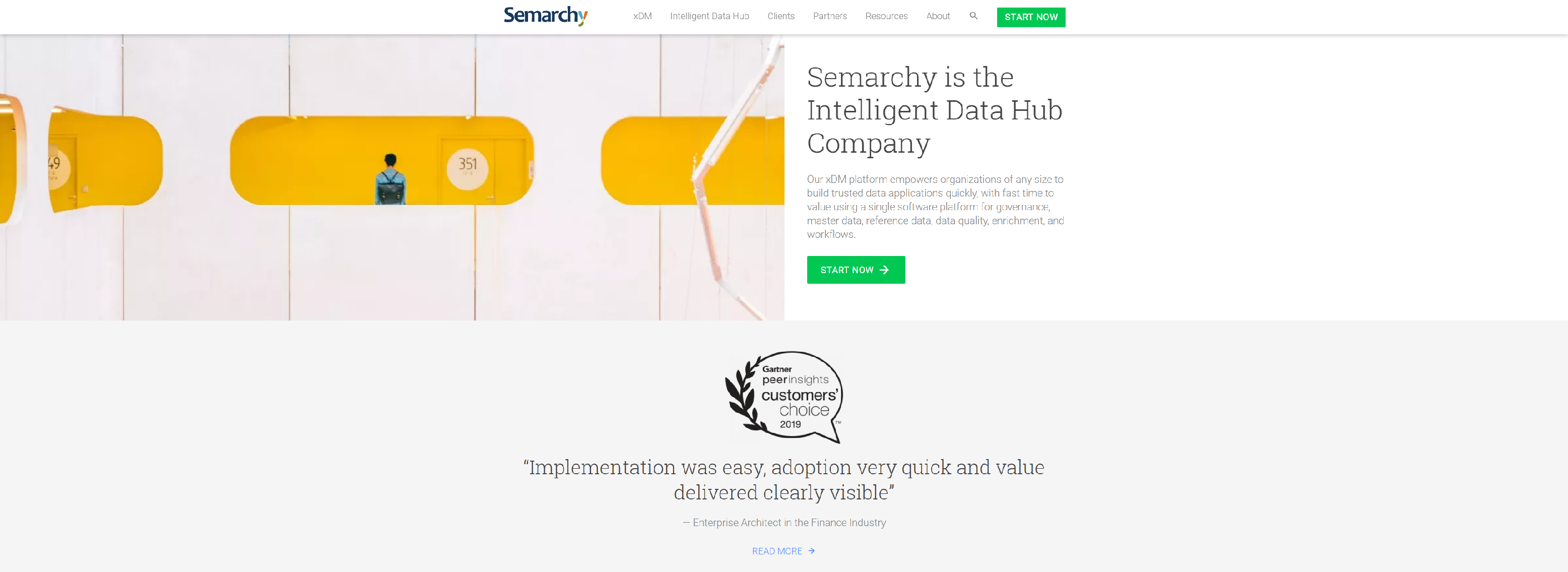Through daily operations and routine functions performed in companies, large amounts of data is generated and stored as part of the company’s infrastructure. This data may take the form of employee files, ledgers of transactions, product information, and a myriad of other medium. This data is important to the structure and streamlining of any business or internal operations the company performs, and so it needs to be managed effectively. Without proper data management, there may be mismatches in information, misuse of data, discrepancies in the implementation of data provided or various other problems. Master data management is a collection of tools, processes and standards by which some of this data is defined and managed.
While proper management is important for all types of data, not every data entity is serviced by master data management. Master data is generally comprised of more complex, large-scale data that is used in many applications throughout an organization, and thus needs to be properly managed to ensure consistency within and without of the organization. As a an example, a specific bill sent to a single customer is important in the function of transactions between the customer and the company, but it is only a single entity whose scope is limited so it is not considered to be master data. However, a list of all the customers and their billing cycles would be used in different departments within the company for different functions, and would thus comprise a master data entity.
There are many different ways of going about managing master data, but a few general steps which can be taken to work towards establishing an effective MDM system are:
1. Identify master data and its sources – Identifying what data needs to be managed and where it is stored allows for appropriate methods to be implemented for its management, and can also reveal some problems at the very basic levels of data collection.
2. Identify who produces and uses master data – By identifying what generates the master data and the applications in which it is used, targeted approaches to managing this data in a productive way for both ends can be made.
3. Analyze the details of the data – The type of data, its dependencies, what constraints exist for the current system used to store data are all important variables to consider when implementing a data management system.
4. Develop a model – A prototype of the master data – what the data should look like, what should be stored in it, how large it is, standards that should be used when recording data, etc. is necessary to ensure that all data meets the criteria and assumptions under which the MDM system operates.
5. Choose the method and tools to be used – After the details about the data are known, a set of tools that best fits the needs of the organization with regards to its master data can be selected, modified or created.
6. Developing infrastructure and maintenance standards – With the systems in place to manage the data, how data is stored and maintained becomes the next concern. Without proper standards for updating and destroying data, the systems implemented for managing it will fail to remain consistent.
Read Also: Master Data Management Definition
MDM Architecture
While master data management solutions may take many forms, most of them share similar architecture. This architecture is what allows for the accurate, consistent management of data and data processes by maintaining a structured environment under which MDM tools can operate. At the core of these systems is the MDM hub, a database in which master data is cleaned, collected and stored. MDM solutions may use multiple hubs to govern different sets of data, such as product information, customer data and site data, and each hub generally utilizes one of three common models: transaction/repository, registry, or hybrid.
In a transaction/repository-style hub, all relevant data is stored and accessed from a single database, and the database must contain all of the information needed by the different applications which access it. All data is consolidated and centralized, and published to the individual data sources after it has been linked and matched. This style of hub allows for a single source of data to be created, minimizing duplication by making it easier to detect as data is collected and cleaned. However, the transaction/repository style has drawbacks as well. Existing applications may have to be modified to use the master data, and in some cases this is not possible. Different applications and services which serve as an interim interface between the MDM software and the data-dependent applications may be needed and this can add to costs. Also, data models need to be complex enough to include all relevant information for the applications that utilize them, but not so large that they become overly large.
Registry style hubs, in contrast, do not store master data in the hub, but rather master data is maintained within native application databases. The hub instead stores lists of keys with which to access all relevant attributes for a specific master data entity, linking these attributes between application databases. The registry style hub allows for applications to remain fairly intact as all data is managed within native databases. However, when requests are made to access master data, data must be located, a query must be distributed between numerous databases, then a list of the requested data must be formed all in real time, and as the number of source databases grows, this can become increasingly inefficient. In addition, duplicate data entities can reside on different databases, or even within the same database, and while consolidation and cleaning of individual databases would be ideal, it is not always practical. Another disadvantage is that when new databases are to be included in the hub registry, new keys must be added to the existing tables, which may also require altering how queries are generated.
Hybrid style hubs utilize methods from both transaction/repository and registry style hubs, and try to address some of the issues present in each. Since it may not be practical to update existing applications or to send inefficient, massive queries across several databases, the hybrid system combines some of the advantages present in the other models by leaving master data on the native databases, generating keys and IDs to access this data, but replicating some of its important attributes to the hub. When queries are made, the hub can service the more common requests, and queries only need to be distributed for the less-used attributes, which results in a more efficient process. While the hybrid style combines advantages of both of its parent models, it has its own disadvantages. Since it stores replicated data from outlying databases, it may run into updating issues, and, like the transaction/repository style, deciding which attributes to store, naming to be used and format to store them in can create problems.
Master Data Management Software
Master Data Management (MDM) software is one of the top software being marketed to companies right now. These are one shot solutions to data management. If you can find a good and efficient MDM software, you will be able to control your business better.
In an instant, you will have access to vital information that you may need to make an very important decision. Without the proper information and data, it is not possible to predict trends, or create new services, contact suppliers and customers, as well handle personnel.
Part of a good MDM software is being able to synchronize the supply chain, sales and after sales, products and merchandising, as well as marketing, accounting and risk management, government regulatory reporting and trade reconciliation.
As they say, information is gold, and so without it, your company officers will not be able to function effectively. It would be impossible to expect them to remember everything and retain the data in their laptops or even memory banks.
A good MDM software must also address the issues to do with inaccurate or inconsistent terms and data. Simple concerns such as how to type in figures could spell disaster for the company.
The three basic areas of MDM are people, location, and assets. These are the master files. The MDM software you should get is one that can be very detailed and accurate, at the same time handle the right process and data flow. The main objective of a good MDM software is to always have uncorrupted data. This is the only way a company can move forward. It should avoid bundling of different applications that could conflict with each other, especially if the company has networking and sharing.
One way to analyze a good and effective MDM software is by checking your organizational chart. Here you will see what are the major areas of the company and how they work together to produce a desired result.
From your organizational chart and working with a MDM software, you can plug loopholes and create a more accurate data base. The other benefits of a effective MDM software is basically that the company will be able to function more effectively, and in the process, this will translate into better performances and higher sales.
For example, officers and supervisors can make better and quicker decisions. Your customers will be attended to properly. Their needs, as well as their feedback will be part of your database. It will take you less time constructing a marketing plan for new products because you have a better data flow.
As far as purchasing and production is concerned, you can accurately trace all transactions in and out without batting an eye. As long as you have implemented the “proper rules” in data entry, you will keep your MDM software up to date and consistent.
All these groundwork, if done properly, will ensure that employees as well as officers and owners will be able to function more effectively and there will be less time wasted and back jobs due to inconsistencies and misinformation.
As a result, you will have a well oiled machine, and that’s what every company needs today if they want to keep up with the competition, and surpass them.
INFORMATICA

As the world’s leader in enterprise cloud data management, we’re prepared to help you intelligently lead – in any sector, category or niche.
- Acquire data quickly no matter its source (on-premises, in the cloud, or from third parties)
- Gain visibility into data, relationship patterns, and variations—and make any required corrections
- Easily enrich master data records with data from external providers
- Create a trusted view and securely deliver data for both analytical and operational use cases
- Deploy MDM on-premises and in the cloud with confidence
PIMCORE

Pimcore open source MDM platform enables enterprises centrally manage their master data, thus reducing data silos, errors and increasing the operational efficiency.
- Workflow Management
- Data Quality
- Rich Content Integration
- Audit Trail
- Superior Connectivity
STIBOSYSTEMS

Stibo Systems empowers you to deliver it, creating a single version of the truth to drive better decisions, experiences and outcomes, and to address critical initiatives.
- Digital transformation
- Data quality
- Time to value
- Customer centricity
- Improved compliance
- Speed-to-market
TALEND

Talend Cloud delivers a single, open platform for data integration across cloud and on-premises environments.
- Turn your data into a single version of the truth
- Deliver MDM projects at scale
- Extend access to trusted data to all
SAP

Consolidate and govern your master data and ensure data quality and consistency across your organization with the SAP Master Data Governance application.
- Enable consolidation for customer, supplier, and product databases on intuitive and flexible process with consumer-grade user experience
- Create, maintain, and distribute master data in a centralized source that extends across a wide variety of heterogeneous systems in your enterprise
- Highly effective mass change process enabling master data stewards to perform bulk changes in business partner, customer, supplier, and product data
- Define, validate, and monitor business rules to safeguard master data readiness and fit for use
- Measure and monitor master data governance processes
- SAP Software Accessibility
- Product Road Map
RELTIO

Master Data Management Software by Reltio, it combines modern MDM software with data-driven applications for better planning, customer engagement and risk management.
- Reliable Data at Big Data Scale
- Native Cloud Data Platform
- Complex Relationships & Hierarchies
- Operational & Analytical Convergence
- Agility & Flexibility
- Fast Time to Value
- Built-in Security & Compliance
- Compelling Business User Experience
TIBCO ORCHESTRANETWORKS

Orchestra Networks is a leading Enterprise Data Management software vendor (MDM, RDM, Data Governance).
- Flexible data models to support any master domain and relationships
- Integrated data quality to profile, cleanse, validate and match data
- Collaborative workflow to on-board, update and approve master data
- Business user interfaces to view and author master data
- Real-time and batch interfaces for systems integration
- Data quality dashboards to analyze and measure performance
SEMARCHY

Semarchy is the Intelligent MDM company. Its xDM platform is an innovation in multi-vector Master Data Management (MDM) that leverages smart algorithms and material design to simplify data stewardship, governance and integration.
- Data modeling
- Integration APIs
- Workflows & processes
- Data Quality
- Standardize & blend
- Match & Merge
- Dashboards & Metrics
- Governance & Policies
- Graph & hierarchies
- Fine-grained security
- Enterprise architecture
- Built-in compliance
RIVERSAND

Riversand is an innovative leader in Master Data Management and Product Information Management solutions.
- An extensible platform with smart business applications
- Superior data governance tools that enable businesses to be confident in the accuracy and completeness of their information
- A true multi-domain core designed to provide a holistic view of the business and drive smarter decision making
- High-scale processing that drives enterprise speed and agility
- A native cloud platform that allows for fast implementation and seamless upgrades
- Streamlined collaboration tools that connect internal and external teams
IBM

IBM Master Data Management solutions establish a single, trusted 360-degree view of data and enable users through self-service analytics to deliver insights.
- Agile self-service access to trusted data
- Entity insight with analytical MDM
- Consent management
- Optimize master data environments
ENTERWORKS

Product information and Multi-domain Master Data Management software solutions for B2B and B2C companies.
- Multi-Domain
- Data Governance
- Data Stewardship
- Data Quality
- Flexible Data Model
- Hierarchy Modeling
- Implementation Architectures